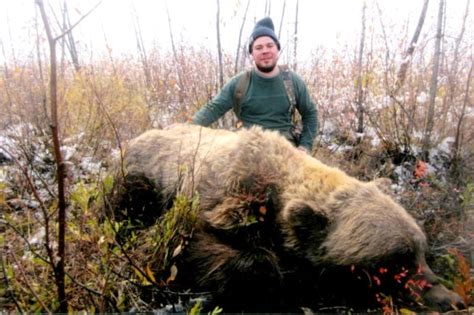
Critically endangered Mohave tui chub, a small fish native to the Mojave Desert, are demonstrating a remarkable resilience by preying on the invasive mosquito fish, offering a glimmer of hope for the species’ recovery and the restoration of their natural habitat.
The Mohave tui chub (Siphateles mohavensis), teetering on the brink of extinction, is now actively feeding on the invasive mosquito fish (Gambusia affinis), a species that has historically threatened the chub’s survival by competing for resources and directly preying on their young. This surprising shift in predator-prey dynamics, observed in artificial refuge ponds, offers a potential nature-based solution to managing invasive species and bolstering the endangered chub population. The findings, detailed in recent ecological studies, highlight the adaptability of the Mohave tui chub and the potential for ecosystem restoration through strategic conservation efforts.
“These fish are showing us they are more resilient than we thought,” said Cimi Reed, a U.S. Fish and Wildlife Service biologist. “It’s an incredible story of a critically endangered species fighting back against an invasive threat.”
A Desert Survivor: The Mohave Tui Chub’s Struggle
The Mohave tui chub is a small, silvery fish endemic to the Mojave Desert, specifically to the springs and marshes of the Soda Springs area. Historically, these habitats were far more extensive, supporting a thriving population of the chub. However, habitat loss, primarily due to water diversion for agriculture and human consumption, coupled with the introduction of non-native species, decimated the chub population.
The introduction of the mosquito fish proved particularly devastating. Mosquito fish are prolific breeders and aggressive competitors. They quickly outcompeted the tui chub for food and space and, more alarmingly, began preying on the chub’s eggs and larvae. This one-two punch of habitat loss and invasive species pushed the Mohave tui chub to the brink of extinction.
In 1970, the Mohave tui chub was officially listed as endangered under the Endangered Species Act. Rigorous conservation efforts were initiated, focusing on creating artificial refuge ponds and managing existing habitats. These efforts aimed to provide safe havens for the chub, free from the threats of mosquito fish and other invasive species.
Turning the Tables: Predator Becomes Prey
For decades, the Mohave tui chub has been viewed as a victim of the invasive mosquito fish. Conservation strategies revolved around eradicating mosquito fish from refuge ponds and creating barriers to prevent their re-introduction. The recent discovery that the chub is actively preying on mosquito fish has upended this understanding and provided a renewed sense of optimism.
Several factors may have contributed to this shift in behavior. One possibility is that the chub, under pressure from dwindling resources and intense competition, has adapted its feeding habits. As the population of mosquito fish grew within the refuge ponds, the chub may have been forced to exploit them as a food source.
Another possibility is that the chub’s predatory behavior was always present but went unnoticed. Smaller chub may have always preyed on mosquito fish larvae, but only recently have larger chub begun to target adult mosquito fish. This shift could be due to changes in environmental conditions, such as water temperature or food availability, that make mosquito fish more vulnerable to predation.
Regardless of the underlying cause, the fact remains that the Mohave tui chub is now actively controlling the mosquito fish population within its refuge ponds. This is a significant development with far-reaching implications for the conservation of the species.
Implications for Conservation: A New Hope
The Mohave tui chub’s newfound predatory behavior offers a potential nature-based solution for managing invasive species and restoring the chub’s natural habitat. Instead of relying solely on chemical treatments or physical removal to control mosquito fish, conservationists can now potentially leverage the chub’s natural predation to keep the invasive species in check.
This approach has several advantages. First, it is a more sustainable and environmentally friendly method of pest control. Chemical treatments can have unintended consequences for other aquatic organisms, while physical removal can be labor-intensive and costly. Using the chub as a natural predator avoids these drawbacks.
Second, it promotes the restoration of a natural ecosystem. By controlling the mosquito fish population, the chub is helping to restore the balance of the aquatic ecosystem. This, in turn, can benefit other native species and improve the overall health of the environment.
Third, it increases the resilience of the chub population. By actively preying on mosquito fish, the chub is securing its own food supply and reducing competition for resources. This makes the chub population more robust and better able to withstand environmental changes.
Challenges and Future Directions
While the discovery of the chub’s predatory behavior is encouraging, it is important to acknowledge that challenges remain. The chub is still critically endangered, and its population remains small and fragmented. The long-term effectiveness of the chub’s predation on mosquito fish is also uncertain.
Several key areas require further research:
- Understanding the Mechanisms of Predation: More research is needed to understand how the chub is able to prey on mosquito fish. What specific adaptations or behaviors allow it to capture and consume the invasive species?
- Assessing the Impact on Mosquito Fish Populations: It is important to carefully monitor the mosquito fish population within the refuge ponds to assess the impact of the chub’s predation. How effectively is the chub controlling the mosquito fish population? Are there any unintended consequences of this predation?
- Optimizing Habitat Conditions: Conservationists need to optimize habitat conditions within the refuge ponds to further promote the chub’s predatory behavior. This may involve manipulating water temperature, vegetation cover, or other environmental factors.
- Expanding the Range of the Chub: The ultimate goal is to re-establish the chub in its native habitat. This will require restoring degraded habitats and preventing the re-introduction of mosquito fish. The chub’s predatory behavior could play a crucial role in this effort.
“We are still in the early stages of understanding this dynamic,” Reed stated. “But the initial results are very promising. This could be a game-changer for the conservation of the Mohave tui chub.”
Broader Implications for Conservation
The story of the Mohave tui chub has broader implications for conservation efforts around the world. It highlights the importance of understanding the complex interactions between species within an ecosystem. It also demonstrates the potential for nature-based solutions to address conservation challenges.
Invasive species are a major threat to biodiversity worldwide. They can outcompete native species, alter habitats, and transmit diseases. Controlling invasive species is often a difficult and costly undertaking. The Mohave tui chub’s success in preying on mosquito fish offers a valuable lesson in how to leverage natural processes to manage invasive species and restore ecosystems.
“This situation underscores the importance of adaptive management,” explained Dr. Peter Unmack, a fish ecologist not directly involved in the study. “We need to constantly monitor ecosystems and adjust our conservation strategies based on new information. The Mohave tui chub has shown us that even species on the brink of extinction can surprise us with their resilience and adaptability.”
The rediscovery of the Mohave tui chub’s resilience is a testament to the power of conservation efforts and the remarkable adaptability of nature. It serves as a beacon of hope for the future of this endangered species and a reminder of the importance of protecting our planet’s biodiversity.
The Road Ahead: A Collaborative Effort
The ongoing recovery efforts for the Mohave tui chub are a collaborative endeavor involving numerous organizations, including the U.S. Fish and Wildlife Service, the California Department of Fish and Wildlife, and various academic institutions and conservation groups. These partnerships are crucial for pooling resources, expertise, and manpower to address the complex challenges facing the chub.
Future steps in the conservation plan include:
- Genetic Analysis: Ongoing genetic studies will help determine the genetic diversity within the remaining chub populations. This information will be used to guide breeding programs and ensure that the genetic health of the species is maintained.
- Habitat Restoration: Continued efforts to restore degraded habitats will be essential for expanding the range of the chub. This will involve removing invasive plants, restoring natural water flow, and creating new refuge ponds.
- Community Engagement: Educating the public about the importance of the Mohave tui chub and its role in the ecosystem is crucial for building support for conservation efforts. Local communities can play an important role in protecting the chub’s habitat and preventing the introduction of invasive species.
- Climate Change Adaptation: As the Mojave Desert becomes increasingly arid due to climate change, it will be important to adapt conservation strategies to address the challenges of water scarcity and habitat degradation. This may involve developing new water management techniques and creating more resilient refuge ponds.
“The recovery of the Mohave tui chub is a long-term project that will require sustained effort and collaboration,” said Reed. “But we are optimistic that, with continued dedication and innovation, we can ensure the survival of this unique and resilient species.”
The surprising turn of events with the Mohave tui chub showcases the dynamic nature of ecosystems and the potential for even critically endangered species to adapt and thrive. It also underscores the importance of continued research, adaptive management, and collaborative conservation efforts to protect biodiversity and restore natural habitats. The fight for the Mohave tui chub is far from over, but its newfound predatory prowess offers a renewed sense of hope for its future.
Frequently Asked Questions (FAQ)
1. What is the Mohave tui chub and why is it endangered?
The Mohave tui chub (Siphateles mohavensis) is a small, silvery fish native to the Mojave Desert in California. It is endangered primarily due to habitat loss from water diversion and the introduction of invasive species, particularly the mosquito fish. These factors have led to a drastic decline in its population, pushing it to the brink of extinction.
2. How has the mosquito fish impacted the Mohave tui chub?
The mosquito fish (Gambusia affinis) is an invasive species that competes with the Mohave tui chub for food and space. More significantly, mosquito fish prey on the chub’s eggs and larvae, contributing significantly to the decline of the chub population.
3. What is the significance of the Mohave tui chub preying on mosquito fish?
The discovery that the Mohave tui chub is now preying on mosquito fish is significant because it suggests the chub is adapting and finding a way to control the invasive species that threatened its survival. This offers a potential natural, sustainable method for managing mosquito fish populations and aiding the chub’s recovery. It shifts the chub from being solely a victim to a potential agent of its own salvation.
4. What conservation efforts are currently in place to help the Mohave tui chub?
Current conservation efforts include creating and maintaining artificial refuge ponds free from mosquito fish, managing existing habitats to optimize conditions for the chub, conducting genetic analysis to ensure genetic diversity, restoring degraded habitats, educating the public, and adapting strategies to address climate change challenges like water scarcity. Collaborative efforts involve partnerships between U.S. Fish and Wildlife Service, the California Department of Fish and Wildlife, academic institutions, and conservation groups.
5. What are the future steps for the conservation of the Mohave tui chub?
Future steps include further research to understand the mechanisms of predation, assessing the impact on mosquito fish populations, optimizing habitat conditions to promote predation, expanding the chub’s range through habitat restoration, continuing genetic analysis, community engagement to foster support, and adapting conservation strategies to address climate change impacts. The goal is to establish self-sustaining populations in its native habitat.
6. Has this predatory behavior been observed before?
While the Mohave tui chub may have always preyed on mosquito fish larvae, the observation of larger chub actively targeting adult mosquito fish is a recent development. It is possible that this shift in behavior is a result of environmental changes or increased pressure from dwindling resources, forcing the chub to adapt its feeding habits.
7. How is the discovery of this predatory behavior changing conservation strategies?
The discovery is shifting conservation strategies from solely focusing on eradicating mosquito fish through chemical or physical removal to leveraging the chub’s natural predation as a sustainable method of pest control. This approach can promote the restoration of a natural ecosystem and increase the resilience of the chub population.
8. What challenges still exist for the Mohave tui chub’s recovery?
Despite the positive development, challenges remain. The chub is still critically endangered, with a small and fragmented population. The long-term effectiveness of the chub’s predation on mosquito fish is uncertain. Furthermore, ongoing threats such as habitat degradation and climate change need to be addressed.
9. Who is involved in the conservation efforts for the Mohave tui chub?
The recovery efforts are a collaborative effort involving numerous organizations, including the U.S. Fish and Wildlife Service, the California Department of Fish and Wildlife, and various academic institutions and conservation groups.
10. What can the public do to help with the conservation of the Mohave tui chub?
The public can support conservation efforts by educating themselves and others about the importance of the Mohave tui chub and its role in the ecosystem. They can also support organizations working to protect the chub’s habitat and prevent the introduction of invasive species. Furthermore, promoting responsible water usage and supporting policies that protect desert ecosystems can contribute to the long-term survival of the Mohave tui chub.









